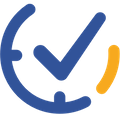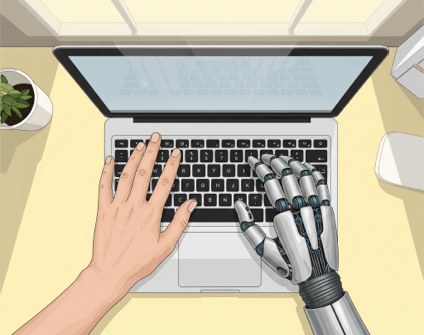Seven hours staring at pixels. Eighty-six notifications. Sound familiar? We’ve become a workforce tethered to screens, our attention fractured between inboxes, chat windows, and endless digital demands. This relentless electronic marathon silently erodes our mental sharpness and emotional balance—often before we even notice the damage. Those intentional moments away from the glow of screens aren’t luxury indulgences—they’re survival tools for the modern mind.
I used to pride myself on being “always online” until I realized what I was missing. My constant connection became a barrier to my best work and creativity. It wasn’t until I took a step back that I found the simple solution: regular breaks away from screens. Just five minutes without digital distractions can refresh your mind in amazing ways. These short pauses have changed my workdays completely—turning overwhelming tasks into balanced, pleasant experiences.
The Digital Drain Problem
The average knowledge worker spends over 7 hours daily on screens, often with minimal interruption. This prolonged screen time contributes to digital eye strain, decreased attention spans, and mental fatigue. Research shows that our brains aren’t designed for this kind of sustained digital processing without breaks.
As Maya Angelou wisely noted, “Every person needs to take one day away. A day in which one consciously separates the past from the future… Each person deserves a day away in which no problems are confronted, no solutions searched for.” While a full day away might not be feasible during work, micro-breaks apply the same principle.

10 Refreshing Tech-Free Break Ideas
1. Breathing Window
Take 5 minutes to stand by a window, looking outside while practicing deep breathing. Focus on the natural environment, however limited it might be in your workspace. This simple practice resets your attention and reduces stress hormones.
Start with a “4-7-8” breathing pattern: inhale for 4 counts, hold for 7, and exhale for 8. As you breathe, notice the details of what you see—the shapes of clouds, movement of trees, or even just the play of light on nearby buildings. This dual focus on breathing and observation creates a meditative moment that can clear mental fog almost immediately.

2. Desk Stretch Sequence
Develop a 3-minute stretch routine you can do without leaving your desk. Focus on your neck, shoulders, wrists, and back—areas most affected by screen work.
I’ve found that even a brief stretching break can instantly relieve tension I didn’t realize was building up in my shoulders and neck.
Try these targeted movements: gentle neck rolls in both directions, shoulder rolls backward and forward, wrist flexes with fingers spread wide, and a seated spinal twist holding the back of your chair. End with a forward fold, letting your arms dangle toward the floor to release lower back tension. These movements counteract the specific physical stress patterns created by desk work.

3. Walking Meeting
For your next one-on-one meeting, suggest taking it while walking, either outside or through your office building. Walking side-by-side rather than face-to-face also changes the conversational dynamic, often leading to more authentic exchanges and creative problem-solving.
For virtual workers, consider taking phone calls while walking around your neighborhood or even just pacing your living space. The combination of movement and conversation engages multiple brain regions simultaneously.

4. Analog Brainstorming
Keep a physical notebook for brainstorming sessions. The tactile experience of pen on paper activates different neural pathways than typing. Create a dedicated “idea notebook” with high-quality paper that makes writing feel satisfying. Use colored pens or markers to map concepts visually.
The freedom from rigid digital formats allows your thoughts to flow more organically, creating connections between ideas that might not emerge on screen. Many breakthrough insights happen when we step away from digital constraints and allow our hands to think alongside our minds.

5. Tea Ritual
Create a small ritual around preparing and drinking tea or coffee. Focus entirely on the sensory experience—the aroma, warmth, and taste—rather than consuming it mindlessly while working. Select a special cup used only for these break moments. Notice the changing color as you steep the tea or the sound of coffee being prepared. Feel the warmth of the cup in your hands and observe the steam rising before taking that first sip.
This sensory-rich experience grounds you in the present moment, creating a mental reset that’s surprisingly powerful. As tea master Sen no Rikyū taught, “Tea is nothing but this: first you heat the water, then you make the tea. Then you drink it properly. That is all you need to know.”

6. Mindful Eating
Step away from your desk for lunch, even if just to a common area. Eat without screens, focusing on your food and perhaps engaging in actual conversation with colleagues. Challenge yourself to identify all the flavors, textures, and ingredients in your meal.
This mindful approach not only enhances your enjoyment of food but also improves digestion through the relaxation response it triggers. Additionally, these lunch breaks create opportunities for spontaneous social connections that often lead to creative collaborations or solutions to stubborn work problems.

7. Nature Micro-Dose
Keep a small plant at your desk or take a short walk to the nearest green space. Research shows even brief nature exposure improves cognitive function. As biologist E.O. Wilson observed, “Nature holds the key to our aesthetic, intellectual, cognitive and even spiritual satisfaction.”
Consider creating a tiny desktop garden with air plants, succulents, or a small terrarium. The act of caring for living things provides a nurturing counterbalance to digital work. For office workers with limited access to outdoors, even looking at high-quality nature photographs for a few minutes has been shown to restore attention and reduce stress. The key is engaging with something living and growing amid the electronic environment.

8. Analog Reading Break
Keep a physical book or magazine at your desk for 10-minute reading breaks. This gives your eyes a break from blue light while still engaging your mind.
Curate reading material specifically for these break moments—poetry collections, short essays, or inspiration books work well for brief intervals. The physical act of turning pages and the different visual experience of print creates a distinct mental shift from screen reading.

9. Doodling Session
Keep a sketchpad handy for creative doodling breaks. This seemingly simple activity can help process information and generate new ideas. Don’t worry about artistic skill—the value comes from the process, not the result.
Try structured doodle exercises like drawing continuous lines without lifting your pen, creating patterns of increasing complexity, or visual brainstorming around a central concept. Studies show that this kind of non-directed drawing activates different neural pathways than focused work, allowing your brain to make unexpected connections between ideas while giving your analytical mind a rest.

10. Connection Break
Have a brief, meaningful conversation with a colleague about something non-work related. Develop a few open-ended questions that invite authentic sharing: “What’s something you’re looking forward to outside of work?” or “Have you discovered anything interesting lately?” These conversations create psychological safety within teams and often lead to deeper workplace relationships.
For remote workers, scheduling short virtual coffee breaks with colleagues can provide similar benefits. These human connections remind us that work is ultimately about people, not just tasks.

Making Breaks a Consistent Habit
The challenge isn’t understanding the importance of breaks—it’s actually taking them consistently. This is where tools like the Planndu app become invaluable in today’s hectic work environment. By setting customized break reminders throughout your day, Planndu gently nudges you to step away from screens at intervals that align with your natural attention spans. The app’s gentle reminder system helps make these breaks an essential part of your productivity routine.
Additionally, Planndu’s Pomodoro focus timer structures your workflow into focused work sessions followed by well-timed breaks, ensuring a balance between deep concentration and necessary rest to maintain peak productivity without burnout.

Stepping away from work at regular intervals can actually boost productivity rather than hinder it. Taking tech-free breaks isn’t just about resting—it sharpens focus and increases the quality of your work. As Leonardo da Vinci once said, “Every now and then go away, have a little relaxation, for when you come back to your work your judgment will be surer.”




